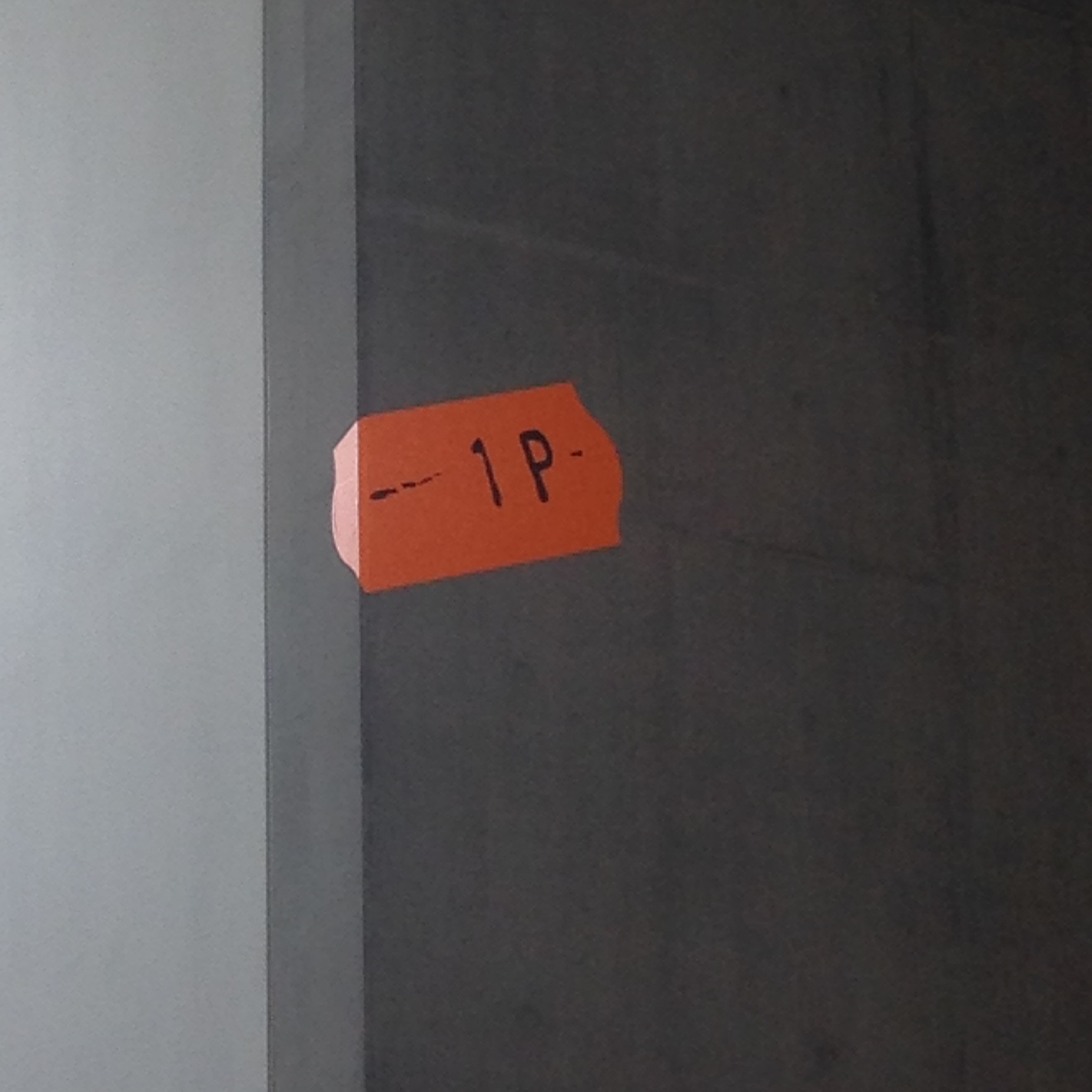
Cara Mills
In this series we connect the dots on work in Degree Show One. Here, we look at artists who challenge the status quo of the art world…
It wouldn’t be a Degree Show if there wasn’t work from a new generation questioning and challenging the status quo. And while this year’s graduating artists can be found engaging with politics and social anxieties there are those that turn their attention to the mechanisms of the art world itself and the role of the artist.
One of the most striking pieces of work promises to be 1p by Will Webster (MA Photography). A blown-up photograph of a price tag, 500 times its actual size, affixed to a college wall brings value and transaction to the heart of the institution. “It’s the closest you can get to being worthless or priceless whichever you way you want to look at it,” says Webster, “I’m interested in the idea of a loss leader, pricing strategies, from the perspective of an artist who cannot escape from selling their work. I feel very privileged that as an artist I can say that I want to price my work as low as possible.”

1p, Will Webster
Literally placing a price tag on an arts school, Webster followed recent discussion on the cost of an arts education and with tongue firmly in cheek, the work also responds to his experience of last year’s degree show which “seemed to be an arms race to see who could make the biggest thing, because it’s your degree show and you have to be noticed.” Placed in the central atrium of the College, the price tag sits not on the fabric of the building but also in the display space for this year’s largest work.
But, Webster says, money isn’t the target here, money doesn’t care. Instead 1p probes the knotty connection between art, value and exchange:
“What does that mean for a generation of artists fixated on the idea of return on investment? That you do art now as a career that brings you money rather than doing it for a higher, more noble need to express yourself or say something.”
Turning from education to writing about art, it’s easy to find the humour in Zarina Muhammad and Gabrielle de la Puente’s (BA Fine Art) online platform The White Pube, an art criticism website that, among other things, reviews exhibitions using three emojis. Set up in reaction to reading a newspaper exhibition review, ‘the exhibition got 3 stars, and I thought ‘what does that mean and how is that giving me any indication of what the show was like?’” says Muhammad. The website rejects obfuscation and art speak, instead embracing subjectivity and honesty.

The White Pube homepage
White Pube has grown beyond the writing and the duo are excited about a series of Art Dates – simply a way to visit exhibitions with the platform’s social media followers, making real relationships from digital ones. As de la Puente explains, their intention is “to battle alienation and individualism and for artists not to cut each other down… making new friendships not networks.”
Though the various machinations of the art world are the focus for some, Cara Mills’s installation (BA Fine Art) is more a response to her own practice and the nature of being an artist. A list of ideas is fed precipitously into a ceiling hung shredder, paper shreds float like snow and collect in a pile on the floor. The piece began when Mills realised she was generating great numbers of ideas for artworks but not realising them. “I got incredibly bored and started making slapdash work… I wanted to confront it,” she says, “so since Christmas I wrote out every idea that I had… For me the most interesting part was where the ideas come from and giving them space to breathe. To show that all ideas, good or bad, are worth recognition.”

Cara Mills
Interested in decision making, how an idea is rejected or accepted, Mills wondered what would happen if she removed the object entirely and prioritised the art in writing. The result is a reducing roll of ideas and a mounting pile of scraps:
It’s almost a shame when all of my ideas get shredded. They’re finished, gone. There was relief at first, but now their mounting they’re becoming an object which is what I didn’t want initially. It’s taking on a new form.
From the price of education to an exhibition review in the Evening Standard, there’s plenty of pressure points in the system for artists to push against. “We’ve realised we’ve got some responsibility,” says de la Puente, “We have to do good, make art better and represent the things we need.”

